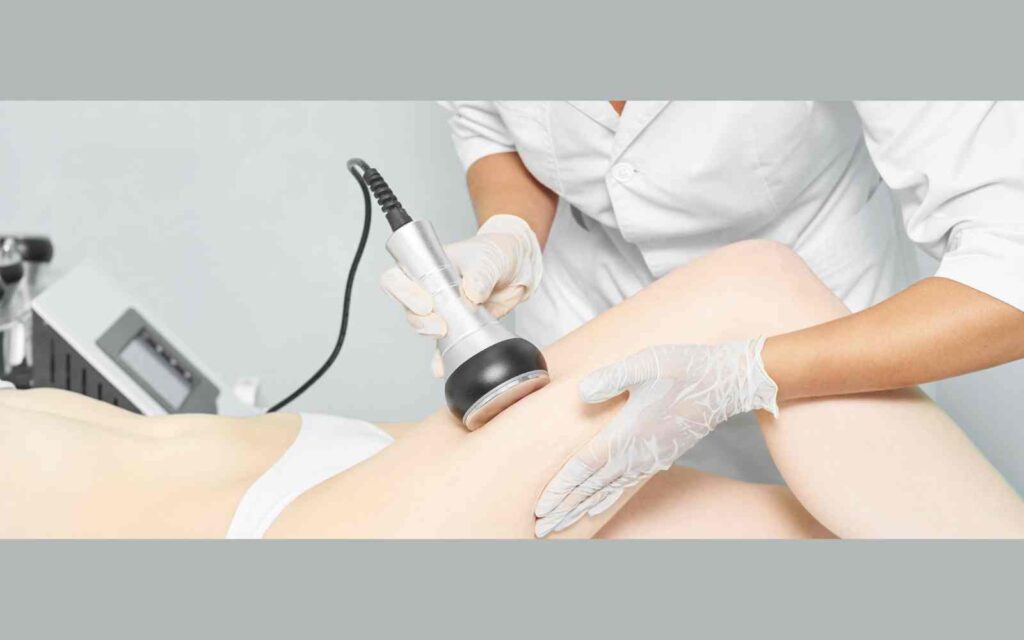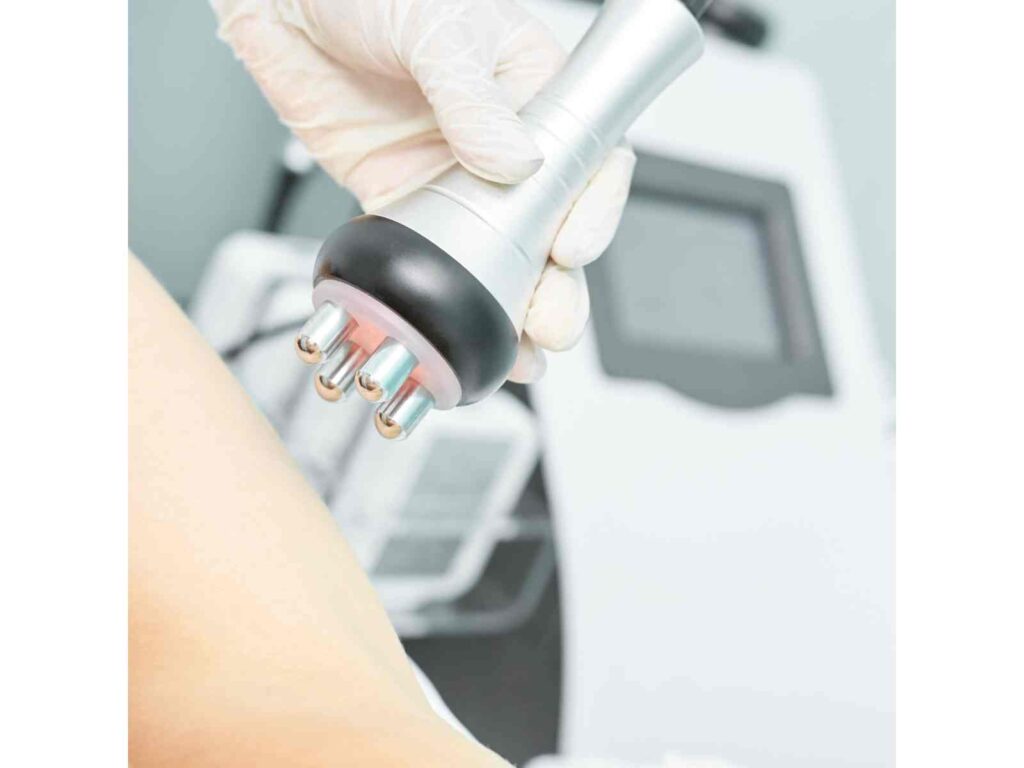
Introduction
Ultrasound Cavitation has emerged as a popular body sculpting technique, offering a non-invasive way to break down fat cells and improve body contour. With its rising popularity, many people are flocking to clinics and spas to try this innovative treatment. However, as with any medical or aesthetic procedure, it’s vital to go in with the right knowledge to ensure you get the results you desire. One misstep could lead to disappointing results or, in rare cases, complications.
The purpose of this article is straightforward yet critical: to educate you on the three most common mistakes people make when considering or undergoing Ultrasound Cavitation treatments. By knowing what pitfalls to avoid, you’ll not only set realistic expectations but also maximize the effectiveness of the treatment. So, before you book your next—or first—Ultrasound Cavitation session, read on to arm yourself with essential information that could make all the difference in your body sculpting journey.
Table of Contents
What is Ultrasound Cavitation?
Ultrasound Cavitation is a non-surgical, non-invasive body sculpting technique that has garnered significant attention in the beauty and wellness industry. This procedure uses ultrasonic waves to target localized fat deposits and break down fat cells, which are then naturally eliminated by the body’s lymphatic system. Unlike traditional liposuction, which involves surgically removing fat, Ultrasound Cavitation offers a less invasive approach that does not require anesthesia, incisions, or downtime.
How It Works
The procedure involves applying an ultrasound device to the skin’s surface in the area where fat reduction is desired. Ultrasonic waves penetrate the skin and create a pressure change that causes the fat cells to break apart. Once the fat cells are disrupted, they release their stored fatty acids, water, and glycerol into the body, which are then metabolized or flushed out through the lymphatic system.

Popularity and General Benefits
Ultrasound Cavitation has become exceedingly popular for several reasons:
- Non-Invasive: There are no incisions, meaning no scars and no lengthy recovery times.
- Convenience: Each session typically lasts around 20-60 minutes, making it easy to fit into a busy schedule.
- Cost-Effectiveness: Generally less expensive than surgical alternatives like liposuction.
- Immediate Results: While multiple sessions are usually recommended for optimal results, many individuals report seeing an improvement after just one session.
It’s worth noting that while Ultrasound Cavitation can yield impressive results, it’s not a weight-loss solution but rather a body contouring method. It is most effective when used in conjunction with a healthy diet and regular exercise.
The Importance of Being Informed
In the era of quick fixes and instant gratification, it’s easy to get swept away by the promise of immediate results. However, when it comes to medical or aesthetic procedures like Ultrasound Cavitation, being well-informed is not just beneficial—it’s crucial. Below, we delve into why knowledge is power and how misinformation, or simply a lack of information, can lead to less-than-desirable outcomes or even complications.
The Risks of Misinformation
The internet is teeming with articles, blog posts, and videos that tout the miracles of body sculpting treatments. While there’s a lot of valid and helpful information out there, there’s also a fair share of misleading claims. Some may over-promise on what Ultrasound Cavitation can achieve or underplay the importance of following pre-and post-treatment guidelines. Believing and acting on such misinformation can set unrealistic expectations, leading to disappointment and dissatisfaction with the procedure.
Lack of Information and Its Consequences
Even if you manage to avoid outright misinformation, simply not having enough information can be problematic. For instance, if you aren’t aware that Ultrasound Cavitation is not a weight-loss solution but rather a body contouring method, you might be disillusioned with the results. Lack of information can also lead to neglect in following pre-treatment and post-treatment guidelines, which could compromise the effectiveness of the procedure and, in some cases, cause complications such as skin irritation or minor burns.
Making Informed Decisions
Being well-informed empowers you to make choices that align with your body goals and current health status. It allows you to set realistic expectations, choose the right provider, and follow through with essential pre-treatment and post-treatment care. Most importantly, it ensures that you’re not just a passive recipient of the treatment but an active participant in your body sculpting journey, enhancing the likelihood of achieving the results you desire.
By being equipped with accurate and comprehensive information, you’re taking a crucial step toward a successful Ultrasound Cavitation treatment. In the following sections, we’ll address common mistakes to avoid, setting you on the path to an informed and satisfying experience.
Mistake #1 – Ignoring Pre-Treatment Guidelines
One of the most critical yet often overlooked aspects of Ultrasound Cavitation is the pre-treatment preparation. While it’s tempting to focus solely on the treatment day and the anticipated results, ignoring pre-treatment guidelines can adversely affect the outcome and even pose risks to your health.
Common Pre-Treatment Guidelines
- Hydration: Many experts recommend drinking plenty of water in the days leading up to the treatment. Proper hydration can facilitate the process of flushing out the broken-down fat cells.
- Avoid Alcohol and Caffeine: Both substances can dehydrate you and may interfere with the body’s ability to naturally eliminate fat cells.
- Eat Light: A heavy meal right before treatment can make you feel uncomfortable and may interfere with the treatment’s effectiveness.
- Consultation: Always have a detailed consultation with the healthcare provider to discuss your medical history and any medications you may be taking.
Why Pre-Treatment Guidelines are Essential
Following these pre-treatment guidelines optimizes your body for the procedure, helping to maximize the treatment’s effectiveness. For example, proper hydration can aid the lymphatic system in flushing out the broken-down fat cells more efficiently, while avoiding certain substances can ensure that your body reacts favorably to the treatment.
Risks of Ignoring These Guidelines
- Reduced Effectiveness: Failing to prepare your body adequately can result in a less effective treatment. For instance, dehydration could slow down the fat elimination process, requiring more sessions to achieve the desired results.
- Health Risks: In extreme cases, ignoring pre-treatment guidelines could lead to complications. For example, consuming alcohol before your treatment might cause dehydration and an increased risk of bruising.
- Wasted Time and Money: Not adhering to pre-treatment guidelines can make your sessions less effective, necessitating more treatments than initially planned, which means spending more time and money than you had anticipated.
By taking pre-treatment guidelines seriously, you’re setting yourself up for a successful Ultrasound Cavitation experience. This is not just about achieving your body goals; it’s about doing so in a way that prioritizes your overall well-being.
Mistake #2 – Unrealistic Expectations
While Ultrasound Cavitation has proven to be an effective method for body contouring, it’s crucial to understand what it can and cannot do. Setting unrealistic expectations is one of the most common mistakes people make, and it can lead to dissatisfaction and disillusionment.
Limitations of Ultrasound Cavitation
- Not a Weight-Loss Solution: It’s crucial to note that Ultrasound Cavitation is designed for body contouring and not for significant weight loss. The treatment targets localized fat deposits, not overall body weight.
- Results May Vary: Factors like age, skin elasticity, and lifestyle can affect the results. While many people see improvements after a single session, most require multiple treatments for optimal results.
- Maintenance Required: To maintain the results long-term, it’s essential to follow a healthy lifestyle, including diet and exercise.
The Importance of Realistic Expectations
Understanding the limitations of Ultrasound Cavitation helps you set achievable goals. When you’re clear about what to expect, you’re less likely to be disappointed with the results. Moreover, having realistic expectations allows you to plan better—for example, budgeting for multiple sessions if needed.
Consequences of Unrealistic Expectations
- Emotional Toll: Expecting too much and not achieving those high-set goals can leave you feeling demoralized and regretful.
- Financial Strain: You might find yourself investing in additional, perhaps unnecessary, treatments in the pursuit of unattainable results.
- Reputation Damage: In cases of extreme dissatisfaction, some people take to social media or review sites to express their disappointment, which could unfairly harm the reputation of the clinic or healthcare provider.
Setting realistic expectations is not about curbing your enthusiasm but about aligning your goals with the capabilities of the treatment. By doing so, you enhance the likelihood of being satisfied with the results and make the entire process more rewarding.
Mistake #3 – Neglecting Post-Treatment Care
After you’ve successfully undergone your Ultrasound Cavitation procedure, the journey isn’t over. Just like pre-treatment care is essential for setting the stage for effective treatment, post-treatment care is crucial for ensuring that the results are long-lasting and optimal. Unfortunately, neglecting this aspect can compromise your results and may even lead to complications.
Typical Post-Treatment Recommendations
- Stay Hydrated: Continue to drink plenty of water to assist your body in flushing out the fat cells that have been broken down.
- Physical Activity: Light exercise, such as walking, can also help your lymphatic system in eliminating fat cells.
- Avoid Alcohol and Caffeine: These can interfere with the body’s natural processes for removing the affected fat cells.
- Regular Check-ups: Follow-up appointments can help monitor your progress and adjust the treatment plan as necessary.
Why Post-Treatment Care is Crucial
Taking care of yourself after the treatment helps to:
- Maximize Results: Following post-treatment recommendations can optimize the outcome, helping you achieve the best possible results.
- Reduce Risks: Proper aftercare minimizes the chances of complications such as bruising, swelling, or discomfort.
- Long-term Maintenance: Consistent post-treatment care sets the foundation for long-lasting results, aiding you in maintaining your newly contoured shape.
Risks of Neglecting Post-Treatment Guidelines
- Compromised Results: Neglecting proper aftercare can reduce the effectiveness of the treatment, requiring more sessions for optimal results.
- Potential for Complications: Ignoring guidelines increases the risk of complications, which may include skin irritation, swelling, or even minor burns in extreme cases.
- Wasted Investment: Without proper aftercare, you risk negating some of the benefits of your treatment, making your time and financial investment less worthwhile.
In conclusion, post-treatment care is not a step you can afford to skip. It’s a crucial part of the process that serves to optimize and sustain the benefits of your Ultrasound Cavitation treatment.
How to Ensure a Successful Treatment
So, you’ve decided to undergo an Ultrasound Cavitation treatment. That’s an exciting first step towards achieving your body-contouring goals. However, the success of your treatment doesn’t solely rest on the procedure itself; it’s a combination of diligent preparation, realistic expectations, and attentive aftercare. Here are some key points and tips to ensure that your treatment is a success.
Key Points to Remember for a Successful Treatment
- Follow Pre-Treatment Guidelines: Hydration, avoiding certain substances, and eating light can all contribute to the effectiveness of your treatment.
- Set Realistic Expectations: Understand the limitations of Ultrasound Cavitation and what it can realistically achieve for you.
- Adhere to Post-Treatment Care: Proper aftercare is essential to maximize results and minimize complications.
Tips on Selecting a Qualified Provider
- Check Credentials: Make sure the provider you choose is licensed and has specialized training in Ultrasound Cavitation.
- Read Reviews: Patient reviews can provide a glimpse into the experiences of others and can help you make an informed decision.
- Ask for Before-and-After Photos: This can give you an idea of the provider’s work quality and what you might expect from the treatment.
Preparing for a Consultation
- Do Your Homework: Come prepared with some background knowledge so you can ask informed questions.
- List Your Medical History: Providing your medical history and any medications you’re on will help tailor the treatment to your specific needs.
- Be Open and Honest: The consultation is the time to discuss your expectations, fears, or concerns. Open dialogue will help your provider offer the most suitable treatment plan for you.
By being informed, setting realistic expectations, and diligently following pre- and post-treatment care guidelines, you’re setting the stage for a successful Ultrasound Cavitation treatment. Remember, your provider is your partner in this journey—choose wisely and communicate openly to achieve the best possible results.
Conclusion
Ultrasound Cavitation has emerged as a popular and effective body-contouring technique, but like any medical procedure, it comes with its set of do’s and don’ts. Throughout this blog, we’ve delved into three critical mistakes often made in the Ultrasound Cavitation process: ignoring pre-treatment guidelines, setting unrealistic expectations, and neglecting post-treatment care. These errors can significantly affect the quality of your results and may even expose you to unnecessary risks.
Being well-informed is not just advisable; it’s a necessity. A knowledgeable patient is an empowered patient, and this empowerment leads to more satisfactory outcomes. From the initial consultation stage through post-treatment care, being well-versed about the procedure helps you make intelligent choices and fosters a successful treatment experience.
Moreover, the importance of selecting a qualified provider cannot be overstated. Your provider is your partner in this journey towards a more contoured you. Ensure they are credentialed, experienced, and willing to invest time in your consultation to understand your needs and expectations.
In summary, the journey towards body contouring via Ultrasound Cavitation is a collaborative effort that involves both you and your healthcare provider. Equip yourself with accurate information, set realistic goals, and adhere to expert advice for a truly successful Ultrasound Cavitation treatment. Because when it comes to medical procedures, cutting corners cuts short your results.
Ready for a Transformation? Take the First Step Today!
You’ve done the research, understood the importance of proper care, and are set on realistic goals. Now, it’s time to take action. Why leave your dreams on the back burner when you could be living your best life today? At Eternal Vitality, we’re committed to offering you not just state-of-the-art Ultrasound Cavitation treatments, but also the guidance, expertise, and aftercare to make sure your journey is successful.
Don’t trust your body with anything less than the best. Schedule your consultation with Eternal Vitality now and embark on a transformative journey toward the physique you’ve always wanted. Because when it comes to your body, you deserve nothing less than excellence.
Click Here to Schedule Your Consultation with Eternal Vitality Today!
Frequently Asked Questions (FAQ)

Q: How long does an Ultrasound Cavitation treatment session usually take?
A: A typical session can last anywhere from 30 to 60 minutes, depending on the area being treated.
Q: Is Ultrasound Cavitation painful?
A: Most patients find the treatment comfortable, with some experiencing a mild warming sensation. It’s generally considered a pain-free procedure.
Q: Are the results of Ultrasound Cavitation permanent?
A: The fat cells that are treated are eliminated from the body. However, new fat cells can develop if you don’t maintain a healthy lifestyle.
Q: How many treatments will I need?
A: The number of sessions varies based on individual goals and the specific area being treated. Your provider at Eternal Vitality will develop a personalized treatment plan for you.
Q: Can I combine Ultrasound Cavitation with other treatments?
A: Yes, many patients choose to combine Ultrasound Cavitation with other body-contouring treatments. Consult with our experts at Eternal Vitality to find the best treatment combination for you.
Q: What is the cost of Ultrasound Cavitation?
A: Costs can vary depending on the area being treated and the number of sessions needed. Please reach out to us for a tailored consultation to discuss pricing.
Q: How soon will I see results?
A: Some patients see immediate results, while others may need a few sessions to start noticing a difference. Results also depend on adherence to pre- and post-treatment guidelines.
Q: Are there any side effects?
A: Side effects are generally minimal but can include mild redness, warmth, and occasional bruising. Any such effects usually subside within a few hours.
Q: How do I know if Ultrasound Cavitation is right for me?
A: The best way to determine if you’re a suitable candidate is to schedule a consultation with Eternal Vitality. Our experts will evaluate your medical history, body type, and goals to offer the most appropriate treatment advice.

